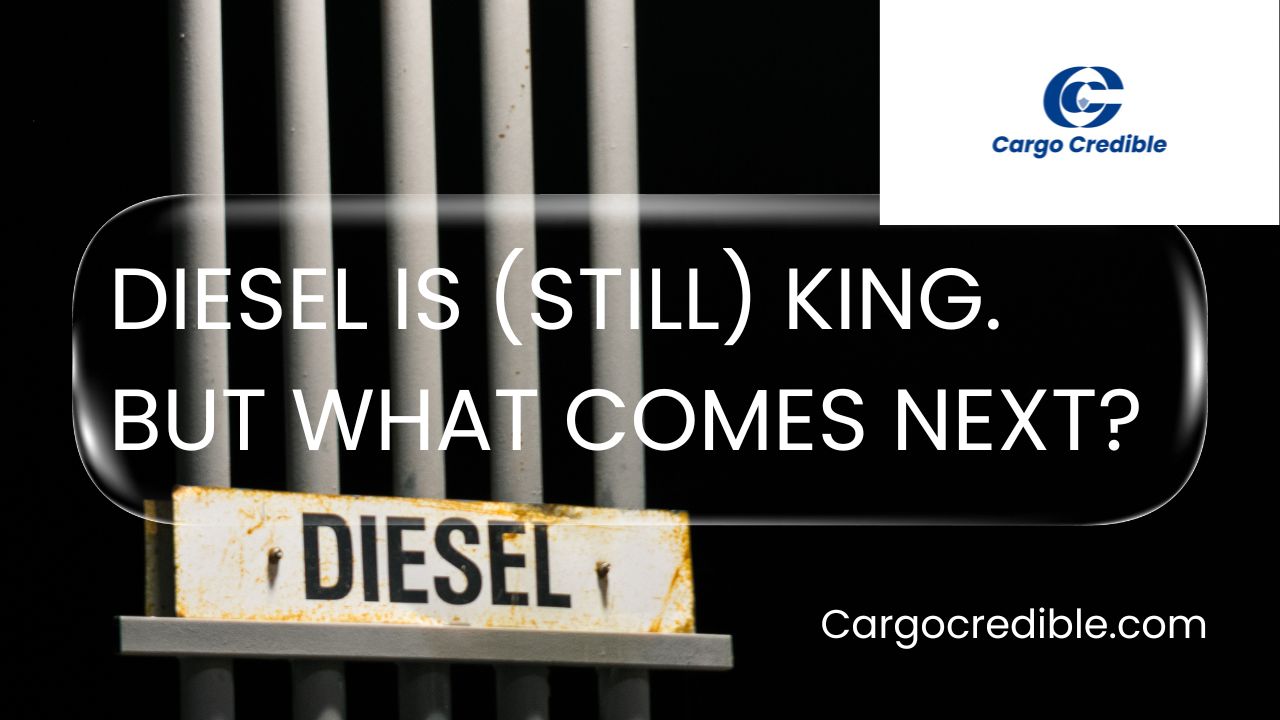Diesel Is (Still) King — But What Comes Next?

Diesel Still Rules the Road
Diesel remains the dominant power fueling the highways. Almost every big truck hauling heavy loads — like food, medicine, fuel, and furniture — runs on diesel engines. What makes diesel the boss of the road? Diesel engines are strong and patient giants. They can pull heavier loads, drive longer distances without stopping, and refuel quickly. They are tough, reliable, and the go-to choice for long-haul transport. Think of diesel as the strong horse pulling the world’s wagon. But this strong horse is starting to feel the strain as the world rapidly changes.
The World’s Growing Problem
Every gallon of diesel burned releases carbon dioxide (CO₂) and other harmful gases into the atmosphere. This pollution heats up the planet and harms the health of drivers who breathe exhaust fumes during long hours on the road. Truck stops often get crowded, causing delays and stress for drivers. Meanwhile, governments and businesses face increasing pressure to reduce pollution and adopt cleaner energy. The big question looms: If diesel still rules, who is next in line for the crown?
Enter the Challengers: EVs, Hydrogen & Alternative Fuels
Electric Trucks (EVs) — The Quiet Revolution
Electric trucks run on huge batteries, making them silent, clean, and futuristic. They produce no exhaust fumes and reduce noise pollution, which benefits cities and drivers. Major companies like Tesla, Volvo, and Freightliner have electric trucks already on the road. However, charging these trucks takes hours, and batteries are heavy, limiting cargo capacity. Charging stations for large trucks remain scarce, especially on rural highways. Electric trucks work well for short trips, but aren’t ready for cross-country hauls yet.
Hydrogen Fuel — The Silent Dream
Hydrogen trucks use fuel cells to generate electricity, emitting only water vapor. They can refuel quickly (in about 10-15 minutes) and travel long distances, matching diesel’s range. Yet hydrogen fueling stations are very rare, and producing clean hydrogen remains costly. Storing hydrogen safely also requires special equipment. Hydrogen offers great promise but faces a long, complex path to widespread use.
Biofuels & Synthetic Fuels — The Bridge Builders
Biofuels are made from plants, used cooking oil, or organic waste, and synthetic fuels combine captured CO₂ with hydrogen. Many diesel engines can use these fuels without major changes. They can reduce greenhouse gas emissions and offer an easier transition. However, large-scale biofuel production can compete with food crops, and synthetic fuels are expensive to produce. These fuels could serve as a practical bridge while cleaner electric and hydrogen infrastructure expands.
Infrastructure: The Missing Piece
The biggest hurdle for new fuels isn’t trucks—it’s fuel availability. Building reliable networks of charging and refueling stations is crucial. Drivers need quick, dependable access to fuel to avoid costly downtime. Infrastructure also includes maintenance support and safe rest stops. Without this backbone, even the greenest trucks can’t drive the shift forward. Ensuring smooth transitions for drivers and fleets is essential to sustaining the transport system.
The Human Element
Truck drivers shoulder enormous pressures: tight deadlines, environmental regulations, and increasingly complex technology. The shift away from diesel must prioritize driver wellbeing. Training, mental health support, and fair policies are as critical as the vehicles themselves. After all, people—not machines—keep the freight moving.
So, What Comes Next?
Diesel won’t be dethroned overnight. It still holds around 74% of global truck market revenue in 2025, with 93.5% of new truck registrations in the EU being diesel-powered. The future will feature a mix: diesel for long hauls, electric trucks in cities, hydrogen for heavy routes, and biofuels as a transitional fuel. Success demands many solutions working together, supported by upgraded infrastructure, cleaner energy, and a focus on drivers’ needs.
The Takeaway
Diesel remains king — for now. Electric, hydrogen, and alternative fuels are growing but face real barriers. Infrastructure development and human-centered policies are key to a stable, sustainable transition. The road ahead is long and challenging — but it leads toward a cleaner, fairer, and more balanced future for trucking and the planet.
Comments (0)
- No comments yet.